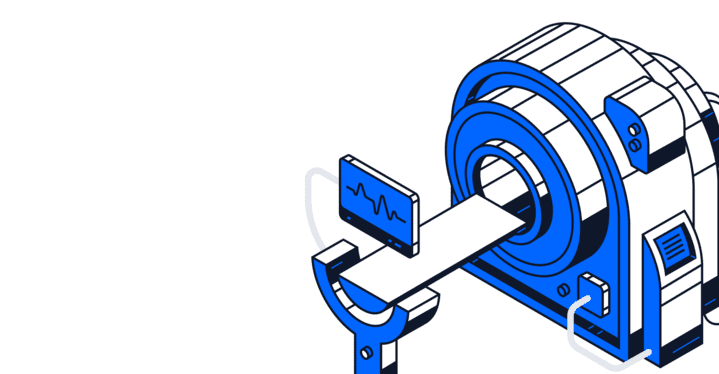Expect More From Your Enterprise Image Exchange: 5 Questions to Ask About Your Current Solution
April 23, 2024
Read More
MRI stands for magnetic resonance imaging and it’s a common, non-invasive, painless imaging technology used around the world.
How does MRI work?
MRI uses a powerful magnet, radio waves, and a computer to create detailed pictures of the inside of your body. It is different from x-rays or CT scans because it does not use radiation. Instead, very sophisticated technology is used to produce three dimensional anatomical images that can be used for diagnosis and treatment monitoring.
A traditional MRI scanner resembles a tube. To obtain images, the patient is placed on a table that slides into the tube that houses the magnetic sensors. An open MRI doesn’t use a tube, rather it is open on the sides so that it does not completely surround the patient.
If you’re interested in a more scientific explanation on how the magnetic field and radiofrequency current forces the protons in your body to align to create an image, here’s a nice overview!
MRI must be better for me since it doesn’t use radiation
It’s not that MRI is generally better than any other imaging technology, but it is optimal for imaging soft tissue. You can’t necessarily choose to use MRI because you want to avoid radiation. It’s more a matter of getting the right diagnostic test for the right body part or injury.
What is MRI used for?
MRI technology is more beneficial for imaging non-bony parts or soft tissues of the body. Areas such as the brain, spinal cord and nerves, as well as muscles, ligaments and tendons can be seen more clearly through an MRI compared to regular x-rays or CT.
.Are there any risks?
MRI technology creates a powerful magnetic field and should not be used on people with implants containing iron. MRI scanners also produce loud “clicking and beeping” sounds that may bother some people, while others may have issues with claustrophobia. The advent of open MRI scanners can do wonders to alleviate this problem. However, you may not have open MRI scanners available in your area. It’s also important to note that certain types of scans for certain body parts are more optimal with a closed machine. If this is the case you can explore options to address claustrophobia including visualization, sedation or music. Here’s a guide to help you overcome any hesitation about your MRI.
How do I prepare for an MRI?
There is very little preparation required, if any, before an MRI scan.You will need to remain still during the scan, which can be anywhere between ten minutes to an hour depending on the type of scan, and body part being imaged.